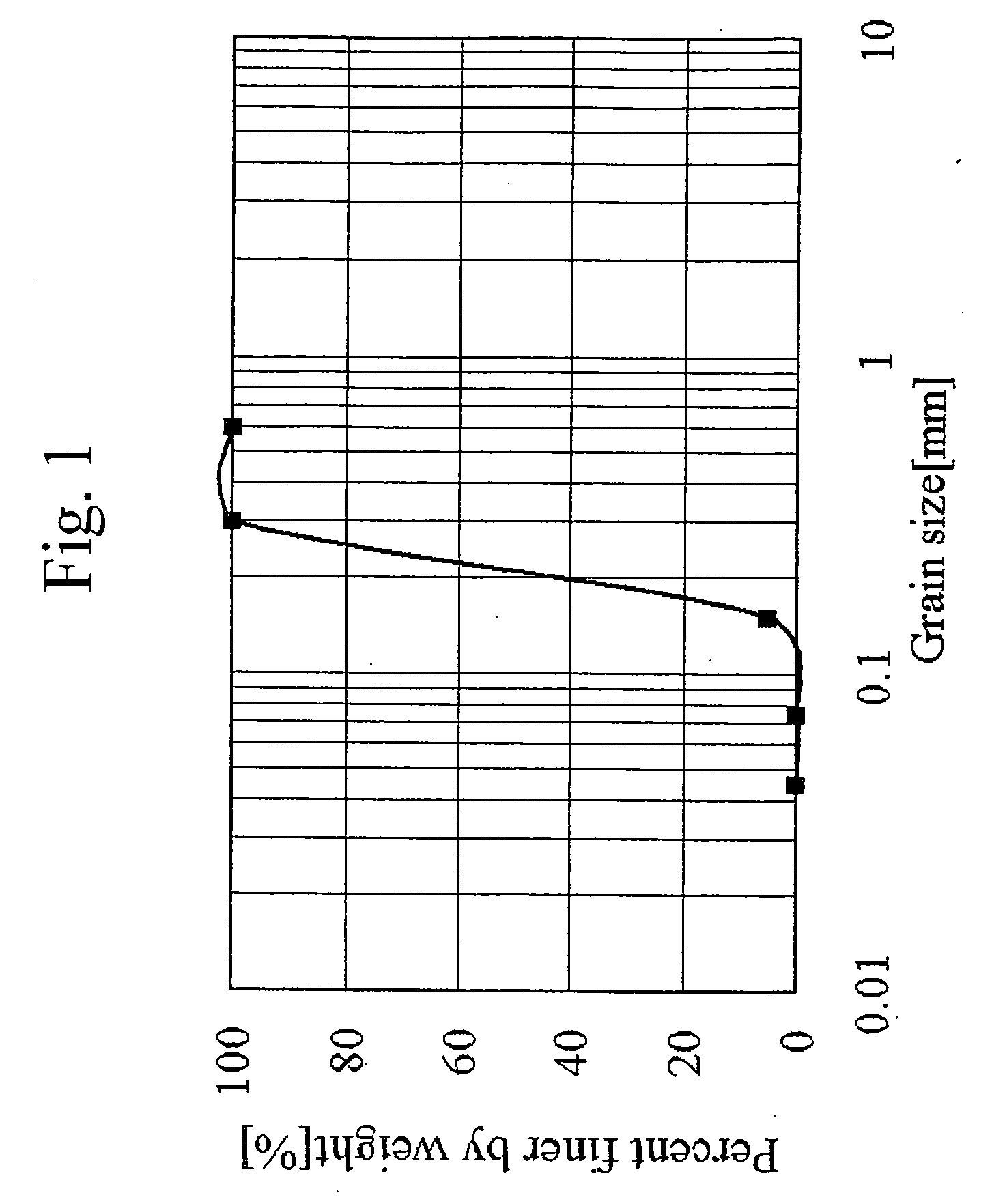Purifying agent for purifying soil or ground water, process for producing the same, and method for purifying soil or ground water using the same
a technology of purifying agent and soil, which is applied in the direction of physical/chemical process catalyst, organic compound/hydride/coordination complex catalyst, other chemical processes, etc., can solve the problems of inconvenient establishment of effective pcb treatment methods, production and use of dioxins having an extremely high toxicity to human bodies even in a trace amount, etc., to achieve continuous and economical
- Summary
- Abstract
- Description
- Claims
- Application Information
AI Technical Summary
Benefits of technology
Problems solved by technology
Method used
Image
Examples
examples
[0125] Typical examples of the present invention are described below.
[0126] (1) The average major axis diameter and the aspect ratio of goethite particles were measured from a transmission electron micrograph thereof. The average particle diameters of hematite particles and iron composite particles were measured from a scanning electron micrograph thereof.
[0127] (2) The Fe and Al contents in the iron composite particles were measured using an inductively coupled high-frequency plasma atomic emission spectroscope “SPS-4000” manufactured by Seiko Denshi Kogyo Co., Ltd.
[0128] (3) The S content of the respective particles was measured using “Carbon and Sulfur Analyzer EMIA-2200” manufactured by Horiba Seisakusho Co., Ltd.
[0129] (4) The crystal phase of the respective particles was identified by measuring a crystal structure of the particles in the range of 10 to 90° by X-ray diffraction method.
[0130] (5) The peak intensity ratio of the iron composite particles was determined by mea...
PUM
| Property | Measurement | Unit |
|---|---|---|
| Temperature | aaaaa | aaaaa |
| Length | aaaaa | aaaaa |
| Fraction | aaaaa | aaaaa |
Abstract
Description
Claims
Application Information
 Login to View More
Login to View More - R&D
- Intellectual Property
- Life Sciences
- Materials
- Tech Scout
- Unparalleled Data Quality
- Higher Quality Content
- 60% Fewer Hallucinations
Browse by: Latest US Patents, China's latest patents, Technical Efficacy Thesaurus, Application Domain, Technology Topic, Popular Technical Reports.
© 2025 PatSnap. All rights reserved.Legal|Privacy policy|Modern Slavery Act Transparency Statement|Sitemap|About US| Contact US: help@patsnap.com


